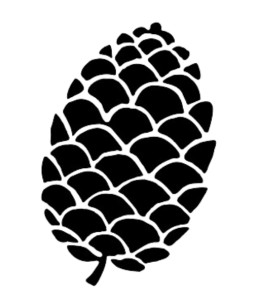History
Described as one of the most beautiful gardens in Scotland, situated at 300 feet, overlooking Luce Bay and the Mull of Galloway, with clear views to the Isle of Man, Glenwhan is a must-see for all who love gardens and horticulture.
Fifty years ago there existed only wild moorland, but with dedication and vision, you can now see glorious collections of plants from around the world. There is colour in all seasons with winding paths, well placed seats, and varied sculptures, focusing around small lochans, adding to the tranquil atmosphere. There is also a 17 acre moorland wild walk, the chance to see red squirrels and a well marked Tree Trail.
Glenwhan has been cultivated over four decades from bog, rushes and gorse to win accolades as one of the best new gardens of recent times. The Gardens also feature unique & spectacular sea views over Luce Bay, The Mull of Galloway, and on a clear day to The Isle of Man. The Gardens are a true labour of love, hewn from rough moorland.







Spring is the time for the Rhododendrons & Azaleas and all the acid loving plants, making the garden wonderfully colourful.
With the warming influence of the Gulf Stream, Glenwhan grows many tender plants from around the Southern Hemisphere, together with large collections of rare trees and shrubs. A numbered Tree Trail for the Dendrologist (tree lover) has been collated, along with a 17 acres of Moorland Walk with 120+ species of wildflowers, grasses, and ferns. Two small lake are the focal point of these family-run gardens, with Seats and meandering paths running along enchanting walks with interesting sculptures, which the Visitor may discover.
So, how did these wonderful gardens come into being?
When my husband & I bought 103 acres of Galloway (site unseen!) in South West Scotland over the telephone in 1971, all we knew was that we had acquired land described” fit for afforestation”. Our first View of the land, on a gloriously sunny winter’s day consisted of bog, bracken & gorse, interspersed with the odd willow, surrounding the Georgian resevoir for the Dunragit Estate. It was not until our second visit that we discovered a ruin looming out of the mist, nestling like an eagle’s eyrie in the gully below. As we explored the ruins, disturbing a herd of cattle, I spied a rickety ladder leading up to the loft. Climbing up, I found myself looking out of a broken skylight at the vast expanse of Luce Bay with the Mull of Galloway stretching into the distance. I shouted down to Bill ‘ THIS IS WHERE WE ARE GOING TO LIVE.’
We moved to Galloway in 1974 to raise our young family and farm the land. The task of making a garden was not our first priority, athough I brought my plants from Herefordshire with me! After a visit to Logan Botanic Garden nearby, on the Rhins of Galloway I was inspired to start making a Garden. Due to the warming influences of the Gulf Stream, I realised that I would be able to grow many tender plants from the Southern hemisphere, and due to the acidity of the ground with a PH of 6.5 many of the ericaceous plants like Rhododendrons, Azaleas, and Magnolias, would thrive. Although I had no horticultural training I felt emboldened to begin creating the gardens on the scale you see today.
Now many years on, the garden enjoys a micro-climate formed by the shelter belt trees reaching a mature height, together with the collection of trees and shrubs from around the world. Geographically the garden lies one mile from the sea as the crow flies. With the onset of global warming, we have endured very wet (average 40 inches a year) and unusually mild winters, with little frost or snow, which has become much more noticeable over the past decade.
I had a blank canvas on which to draw, when starting out at Glenwhan, which is an ongoing labour of love, and I have been very lucky to have had the opportunity to indulge myself in the making of the garden with the support of my family. But most of all how rewarding it is to have the wholehearted appreciation of our visitors, who not only enjoy the garden, but love the peace and tranquility of the place. It is my hope that as Glenwhan Garden continues to change and adapt as time demands, they will keep returning to rediscover this small piece of nature’s magnificence.

‘I wanted a Garden, I got it,
I scrabbled and mucked like a slave
T’was it arthritis, sore backs, I fought it,
Hurled my youth into the grave…’
with apologies to Robert Service author of The Spell of the Yukon,
Tessa Knott Sinclair
We need your consent to load the translations
We use a third-party service to translate the website content that may collect data about your activity. Please review the details and accept the service to view the translations.

